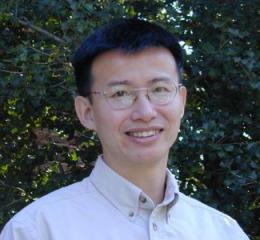- Speaker
- Prof. Xue-Dong Hu
- Department of Physics, University at Buffalo, USA
- Abstract
Recent experimental and theoretical research on spin qubits in quantum dots have clearly demonstrated that spins have long coherence times and can be reliably controlled. Electron spin two-qubit gates can be performed using the strong exchange interaction between dots, which however is short-ranged. How to achieve long-range quantum communication for spin qubits thus remains a significant open problem in the scale-up of spin qubit architectures. One proposed approach involves the transportation of the electrons themselves, which is attractive because of its conceptual simplicity and its similarity to the conventional charge-coupled devices. Here I discuss our recent work on the physics of electron spin decoherence when the quantum dot is in motion. Specifically, we find that the motion induced spin decoherence is a pure longitudinal relaxation channel, whose rate depends on factors such as spin-orbit coupling strength, electron-phonon coupling strength, disorder in the substrate, the strength of the magnetic field, and the speed of the quantum dot motion [1,2]. In the case of electron-phonon interaction induced spin relaxation, we find a range of interesting phenomena originating from the Doppler effect as we vary the quantum dot speed from the subsonic regime to the supersonic regime, including frequency shift in emitted phonons, spin relaxation boom in analogy to sonic boom, and Cherenkov radiation of phonons [2]. Our results are not only important in identifying how severe a problem spin decoherence could be when it is in motion, but also reveal interestingpossibilities in coherent control of phonons in a semiconductor nanostructure. (We thank support by US ARO and NSF PIF)
References:
[1] P. Huang and X. Hu, Phys. Rev. B 88, 075301 (2013).
[2] X. Zhao, P. Huang, and X. Hu, arXiv:1503.00014. Submitted.
- About the Speaker
Professor Hu received his B.Sc. in Physics from Beijing University in 1989, and Ph.D. in Physics from the University of Michigan in 1996. He held postdoc positions at the University of Illinois at Chicago and University of Maryland, and joined the University at Buffalo in 2002. At present he is a full professor in the Physics Department.
- Date&Time
- 2016-06-02 2:00 PM
- Location
- Room: A403 Meeting Room




